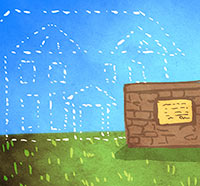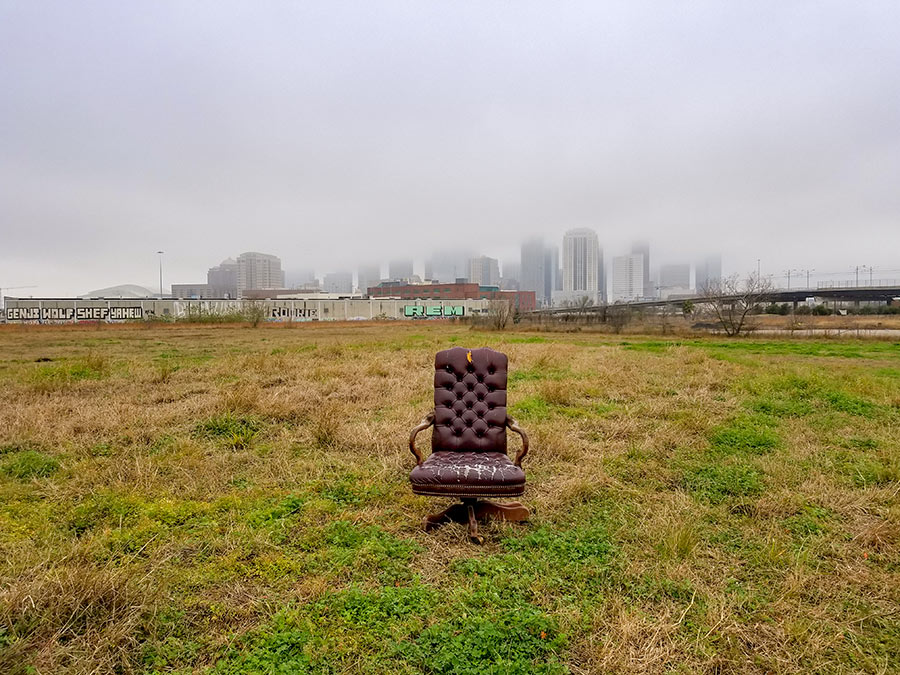COMMENT OF THE DAY: TRACING OUT THE BOTTOM LINES ON HOUSTON’S HISTORIC DEMOS  “‘The excuse is always that the structure would be too expensive to update and bring up to code.’ Your fight is with the city and their code requirements. If it wasn’t so costly and time consuming to ‘save’ this house, that would likely be the better choice for the owner. If they make something too much of a pain, the property gets knocked down. The result is a newer, ‘safer’ house, which is good — but at the cost of knocking down a lot of old cool buildings.” [Cody, commenting on Daily Demolition Report: Second to Nun] Illustration: Lulu
“‘The excuse is always that the structure would be too expensive to update and bring up to code.’ Your fight is with the city and their code requirements. If it wasn’t so costly and time consuming to ‘save’ this house, that would likely be the better choice for the owner. If they make something too much of a pain, the property gets knocked down. The result is a newer, ‘safer’ house, which is good — but at the cost of knocking down a lot of old cool buildings.” [Cody, commenting on Daily Demolition Report: Second to Nun] Illustration: Lulu





But– to Cody and DarbyMom’s comment… look at what gets built in its place: it isn’t a replica or anything like what is knocked down. Instead, neat bungalow gets razed and in place a new stucco POS. Apparently the market for neat homes cannot compete with modern styled designs– regardless whatever cost it would take to renovate the house to be safer or more modern. Really, it seems it’s not about it being safer and equipped with new appliances… it’s simply that it looks newer than 1920 on the outside– or, at least lacks ’20’s interior layout “features” (esp.the Heights where new-builds’ exteriors fit better).
But what you suggest means separate codes for “historic” renovation and new construction. The problem with that is if a certain code requirement isn’t necessary for renovated buildings, why is it necessary for new builds? The code requirement is there because it increases building safety or it doesn’t — regardless if the building is 100 years old or brand new. I don’t see the city — or any government — falling into that kind of argument.
Beyond that, rehabbing a building can cost 2-3x/SF of a new build (I get that some of that is to the code provisions to which you object) but for a lot of builings the systems are just worn out (electrical or plumbing) or were never there (HVAC). You’re often trying to shoehorn these systems into spaces that are tight, confined, and poorly designed to handle them. That still costs a lot more than new build, and will cost a whole lot more than new builds once we’re getting 3D printed prefab wall systems delivered on site.
I’d like to see more of the older buildings saved too, but there’s just not enough that’s distinguished or noteworthy or unique enough about many of these “cool” buildings to make the numbers work to save them.
When exactly does a house have to be brought up fully to code? My 1917 house has a mix of plumbing, electrical the dates from 1917, 1950s, 1970s, 1990 and 2000s.
Old houses are only worth saving when they have special features that present some value over and above the material cost of the structure. I run into this in my properties. In most good remodels, if you want to modernize it to make it safe and comfortable, you have to rip everything down to the studs. That’s because you need to repair rot/termite damage, fix structural issues, and add new insulation, wiring, HVAC and plumbing. So at some point during this type of construction, you end up with a shell of a building.
This is the point where you realize that you could have built a new shell of a building with less money, and the new framing would have been better based on newer engineering principles (examples of problems I’ve encountered with older home include balloon framing, stud spacing 18″ on center, 2×4 roof rafters that sag, under-sized span beams, shiplap subfloors, etc.). Not to mention the headaches of dealing with city inspectors and permits (the permit fees alone will add up to over $1,000, then the inspectors will add at least $5,000 in added and usually unnecessary work at some point – guaranteed).
It’s also at this point that those other features add that intrinsic value that make the enterprise worth it. Examples include salvageable wood floors, doors, phone niches, unique floorplan configurations or exterior architectural features, large trees, and history of the building or neighborhood. But without any of these things, you would quickly realize that the effort is not worth it.
Of course one option would be to half-ass the remodel, only focusing on cosmetic improvements. But then you’ll continually have problems with the mechanical systems, tripping breakers, fire risk, brown water, draftiness, energy efficiency, etc.
If restoring an old house were really so awful, the historic districts in Houston would all be full of dilapidated properties that no one would want to touch. The reality is that it is not that hard to renovate an old house. Most of the ones in Houston are fairly straight forward buildings from the Craftsmen period. People do it all the time and make good money doing it. The real issue is that any ex-high school quarterback who hung around his dad’s construction business can call himself a builder and make a nice pile by filling a lot with new construction. They just get their ex-high school cheerleader realtor friend to sell it and poo poo the historic houses to their clients (“oh, they are pretty, but such a nightmare to maintain”). They will always make more just because 4400 sq ft will always get more than 2800 sq ft. Or in the case of the Harvard house, 2×2900 sq ft if they divide the lot.
And this is why Houston has no soul. Yea capitalism!
I call bullsh#t on the excuses. I’ve rehabbed 4 houses in Montrose (each 80+ years old) – even brought 1 in from the Heights to a vacant lot. I’ve never had problems with codes or inspectors when remodeling these properties. I’ve done “to stud” renovations; taken off roofs because of 2×4 joists; replaced termite damaged floor joists in 3/4 of the first floor; added second floor bathrooms; crammed new systems into extremely tight spaces; added wall and window and attic insulation; re-stuccoed damaged material to original standards; upgraded and fully replaced electrical and plumbing systems and NEVER has it been so expensive that I haven’t made great money on a sale or rent. Yes it was sometimes 2-3x more expensive, but it was Never not profitable. If you appreciate older properties you’ll do the work without thinking about justifying a tear down.